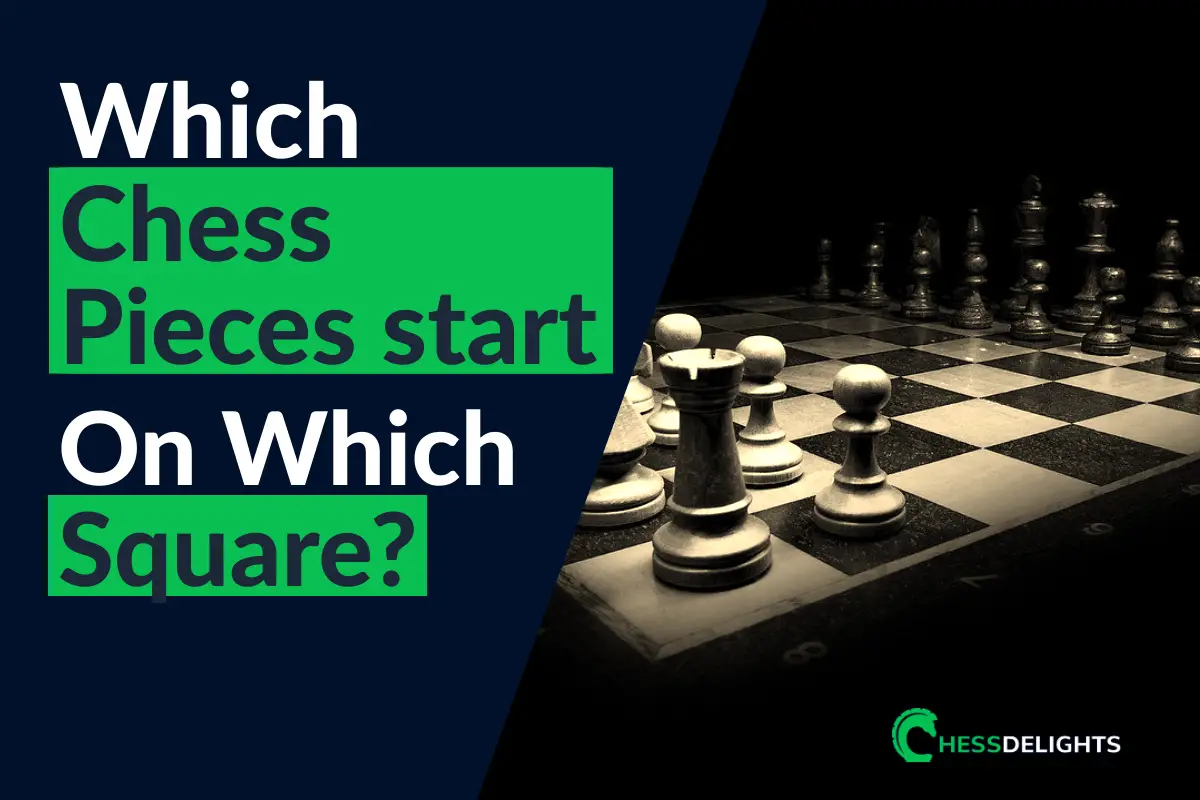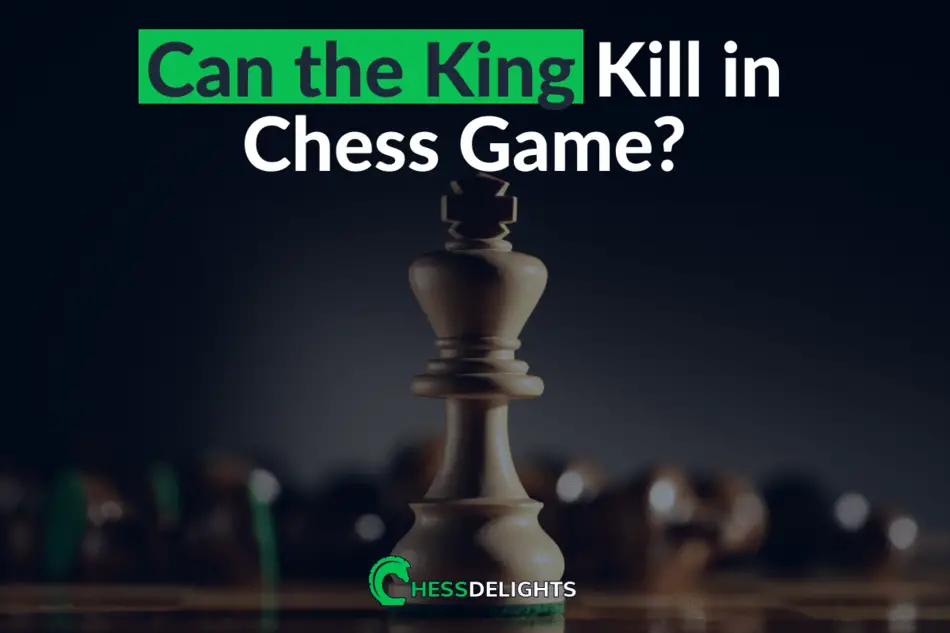It’s important to know which chess pieces start on what square if you are just learning about chess.
For chess beginners, you need to learn how to read algebraic notation or chess notations to understand where the chess pieces will start and play.
I remember the first time I saw a chess board with notations; I didn’t know how it works – but eventually, because of my eagerness to learn chess, I learned how to learn chess notations.
That is why learning algebraic notation should be your first step to master the chess board and learn to read chess books.
Recommended: I also wrote a guide about basics of chess setup and chess board setup with names.
In this article you'll learn where the chess pieces are positioned and what squares they are placed in.
Rook is the chess piece that starts on a1 and h1 squares
The first chess piece and square that we will look at is the a1 square of the chess board. In that position, the chess piece that is positioned on it is the Rook. To be specific, it is the White Rook.
Here is what the White Rook should look like and position on a1 and h1 squares.

Next is the b1 and g1 squares.
Knight is the chess piece that starts on b1 and g1 squares
The second chess piece that we are going to position on squares b1 and g1 is the Knight. The Knight chess piece looks like a horse, and this chess piece starts on b1 and g1 squares. It is the only chess piece that can jump over another piece.
For the b1 and g1 squares, it is the White Knights you are going to use, and it looks like the image below.

Next is the c1 and f1 squares.
Bishop is the chess piece that starts on c1 and f1 squares
The third chess piece that I’m going to show you is the Bishop, and this chess piece starts on the c1 and f1 squares. We are referring to the White Bishop in this 1st rank of the board. The Bishop is supposed to represent a war elephant hence the shape of a trunk and a slit or cut that resembles it.
Here is what a White Bishop would typically look like:

You might also like to read this article: Things You Need To Know About Which Is Better Knight or Bishop?
Next is the d1 square.
The Queen is the chess piece that starts on d1 square
We move on to the next chess square after the c1 square, which is the d1 square. The chess piece that starts in d1 square is the Queen – which is the most powerful chess piece on the board because of its ability to move like a Bishop and Rook.
On the d1 square is where the White Queen starts and will look like the image below:
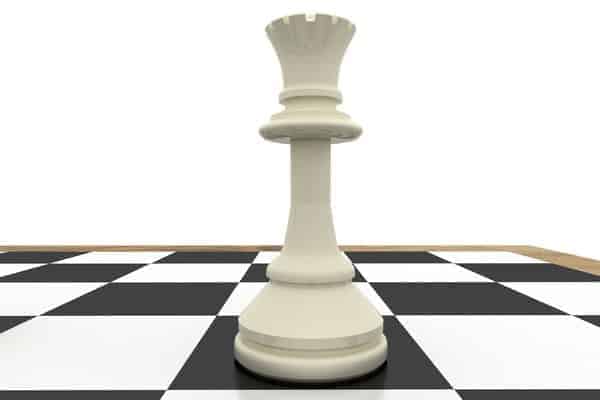
Have you ever asked why the Queen is the most powerful chess piece on the board? Read this article to find out!
Next is the e1 square.
The King is the chess piece that starts on e1 square
The last piece that we will look at in the 1st rank is the White King – which is the most critical piece on the board. The White King always starts on the e1 square of the chess board!
Here is an image of the White King below:
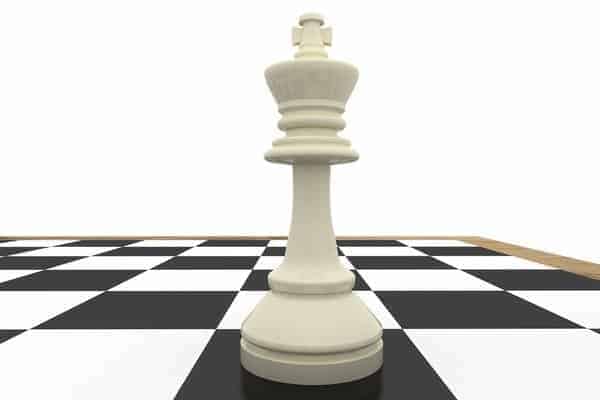
Now we go to the 2nd rank of the chess board.
Pawns are the chess piece that starts on the second rank
We have placed all the major pieces on the board on the first rank, and now we have 8 pieces of White Pawns, which all start on the second rank of the board. The White Pawns are positioned on squares a2, b2, c2, d2, e2, f2, g2, and h2!
The set up for pawns are relatively easy, and your White Pawn should look like the image below:
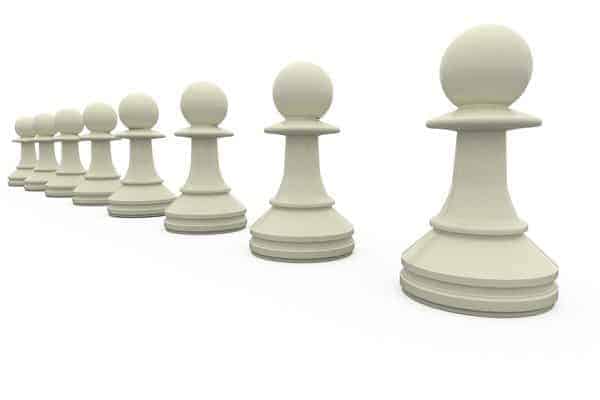
You might also be interested in reading about this article: What is the disadvantage of backward pawn in chess?
We are all done with the first and second ranks of the board; now it’s time to position the Black chess pieces on the 7th and 8th ranks.
We’ll start on the 8th rank first.
Black Rook is the chess piece that starts on a8 and h8 squares
Start your Black Rooks on the a8 and h8 squares of the chess board, and they should be positioned on the same files as the White Rooks.
Here is an image of a Black Rook below:
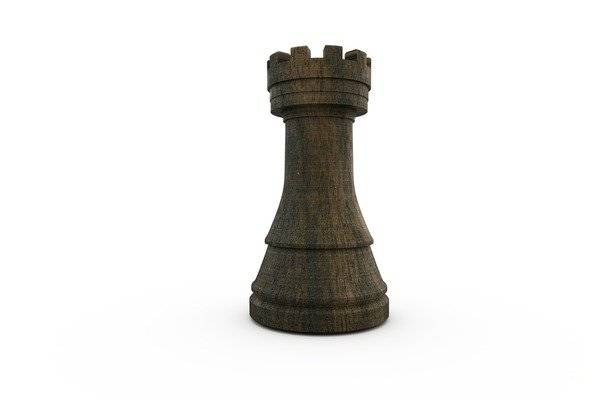
Now let’s take the Black Knights.
Black Knight is the chess piece that starts on b8 and g8 squares
The chess pieces that start on the b8 and g8 squares are the Black Knights – again, to confirm your Knights' correct position, just take a look at the White Knights position on the 1st rank of the board.
Here is an image of a Black Knight below:

Let’s look at the Black Bishops.
Black Bishop is the chess piece that starts on c8 and f8 squares
Position your Black Bishops on the board’s c8 and f8 squares, and they are placed beside the Knights. These chess pieces will be opposite the White Bishop on the 1st rank of the board.
Once you have confirmed that, you can take a look at an image of a Black Bishop below;

Now it’s time to position the Black Queen!
The Black Queen is the chess piece that starts on d8 square
The chess piece that starts on the d8 square is the Black Queen – this chess piece will be next to a Bishop, and just to confirm if the position is correct, you need to check if the White Queen is of the same file as your Black Queen.
The Black Queen should be on d-file, and here is an image of a Black Queen below:
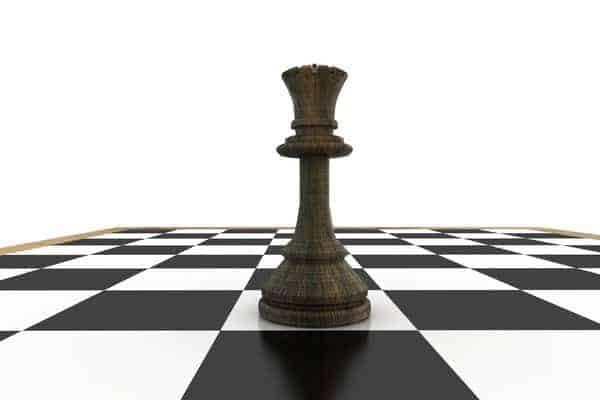
The last black piece is the Black King.
The Black King is the chess piece that starts on e8 square
The only square left is the e8 square, and in this square, the Black King is positioned. Always remember that both the Black and White King starts at the e-file of the chess board.
Below is an image of the Black King.
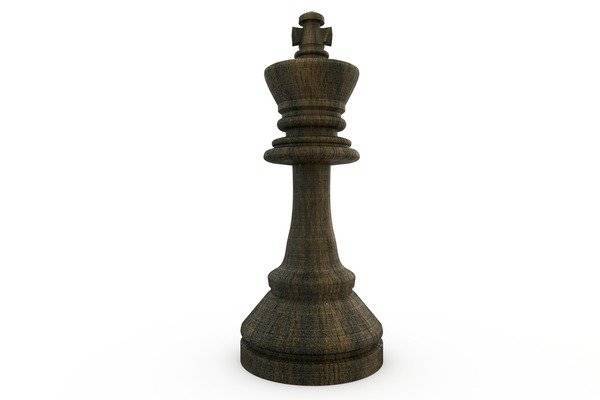
You might also be interested in reading this article about: Can King Be Captured Or Is It Allowed To Take The King?
Now that we are done with the board’s 8th rank, it’s time to set up the 7th rank of the chess board.
Black Pawns are the chess piece that starts on the seventh rank
In this next step, we have eight Black Pawns that start on the board’s seventh rank. This 7th rank will have squares starting from a7, b7, c7, d7, e7, f7, g7, and h7. The Black Pawns are always in front of the major pieces, just like the White Pawns.
Black Pawns will look like the image below:

You now have all your Black and White chess pieces properly placed on the chessboard.
Wrapping Up
You can follow or learn these steps by either going through the board from left to right or in both directions if you wish. This article aims to help you understand which chess pieces start on each square on the 1st, 2nd, 7th, and 8th rank of the board.
Now that you know what type of chess pieces starts on each first and second rank of the opposite chessboard, you can start learning about openings first. Then you progress with studying more about chess strategies and chess tactics. I would also suggest you read more about chess books with algebraic notations to improve your skills using the board.
Important: You can check our own ChessDelights Editions of the Chess Fundamentals digital interactive chess book (downloadable) available on our site.
If your board doesn’t have any notations, you can just use a pen and mark the correct letters and numbers on the board’s rank and files.
After reading this and implementing it using your chess pieces and the board, then you have mastered setting up a chessboard and reading chess notations at the same time! Enjoy learning chess! 🙂

